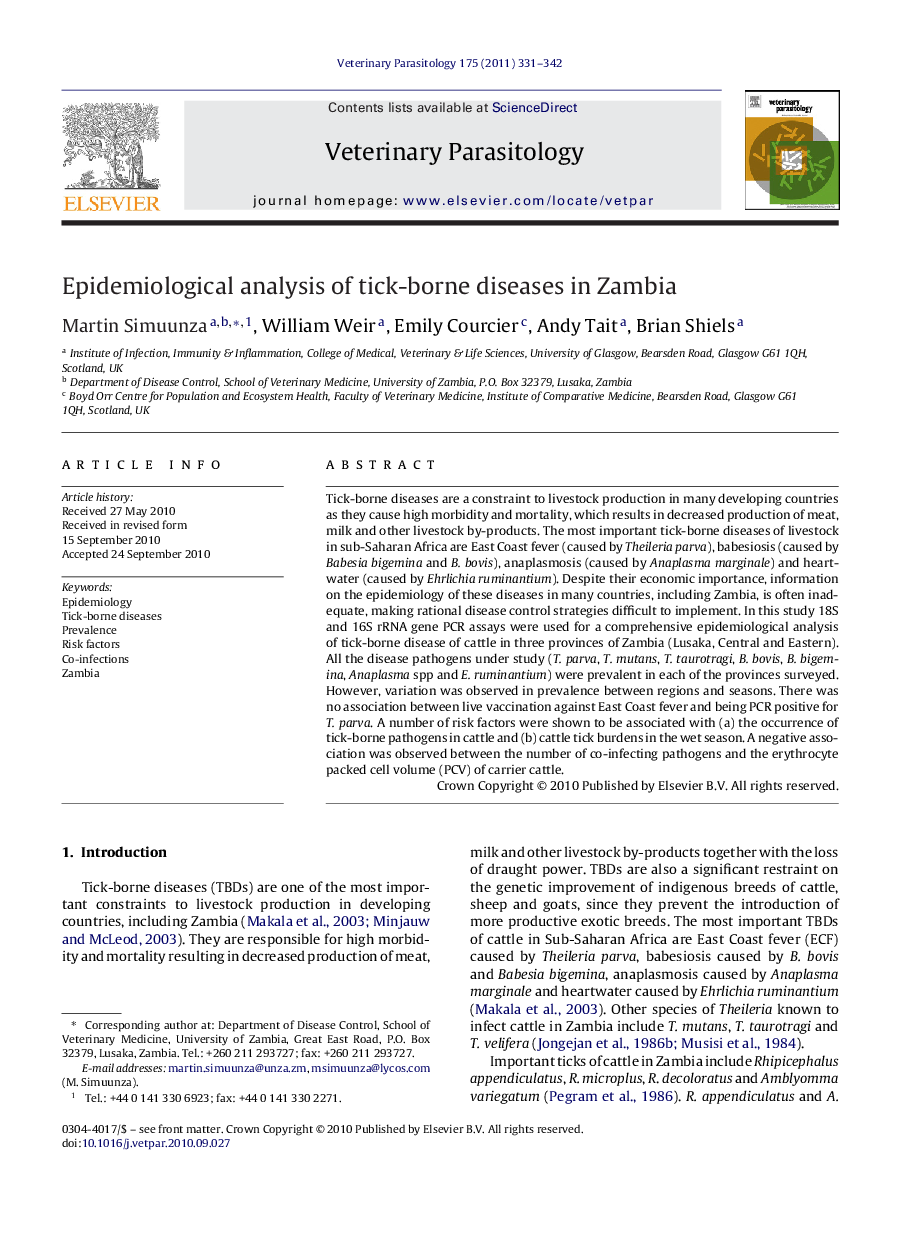| Article ID | Journal | Published Year | Pages | File Type |
|---|---|---|---|---|
| 5806096 | Veterinary Parasitology | 2011 | 12 Pages |
Tick-borne diseases are a constraint to livestock production in many developing countries as they cause high morbidity and mortality, which results in decreased production of meat, milk and other livestock by-products. The most important tick-borne diseases of livestock in sub-Saharan Africa are East Coast fever (caused by Theileria parva), babesiosis (caused by Babesia bigemina and B. bovis), anaplasmosis (caused by Anaplasma marginale) and heartwater (caused by Ehrlichia ruminantium). Despite their economic importance, information on the epidemiology of these diseases in many countries, including Zambia, is often inadequate, making rational disease control strategies difficult to implement. In this study 18S and 16S rRNA gene PCR assays were used for a comprehensive epidemiological analysis of tick-borne disease of cattle in three provinces of Zambia (Lusaka, Central and Eastern). All the disease pathogens under study (T. parva, T. mutans, T. taurotragi, B. bovis, B. bigemina, Anaplasma spp and E. ruminantium) were prevalent in each of the provinces surveyed. However, variation was observed in prevalence between regions and seasons. There was no association between live vaccination against East Coast fever and being PCR positive for T. parva. A number of risk factors were shown to be associated with (a) the occurrence of tick-borne pathogens in cattle and (b) cattle tick burdens in the wet season. A negative association was observed between the number of co-infecting pathogens and the erythrocyte packed cell volume (PCV) of carrier cattle.
